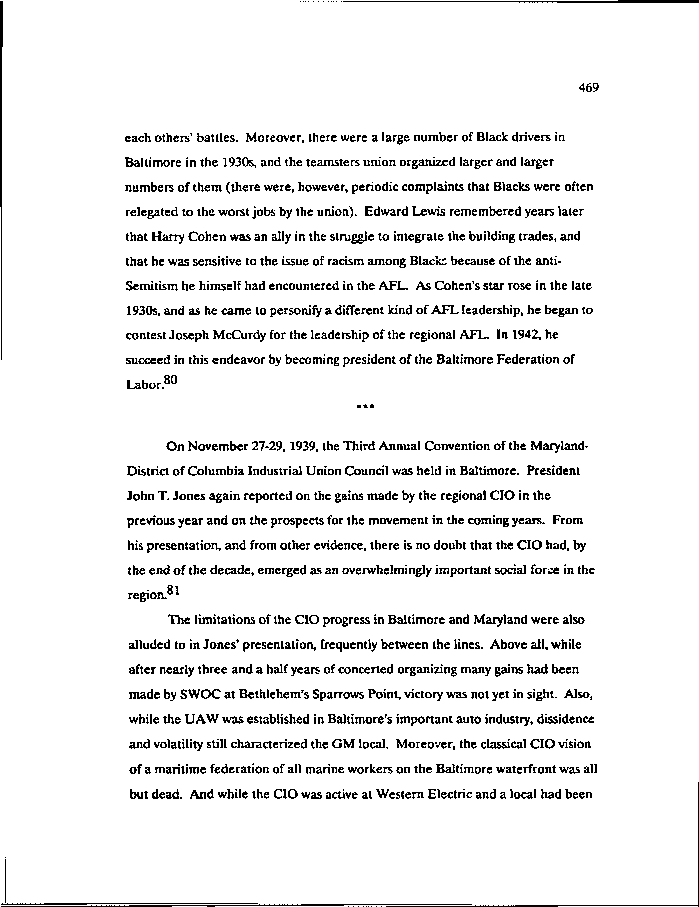|
469
each others' battles. Moreover, there were a large number of Black drivers in
Baltimore in the 1930s, and the teamsters union organized larger and larger
numbers of them (there were, however, periodic complaints that Blacks were often
relegated to the worst jobs by the union). Edward Lewis remembered years later
that Harry Cohen was an ally in the struggle to integrate the building trades, and
that he was sensitive to the issue of racism among Blacte because of the anti-
Semitism he himself had encountered in the AFL. As Cohen's star rose in the late
1930s, and as he came to personify a different kind of AFL leadership, he began to
contest Joseph McCurdy for the leadership of the regional AFL. In 1942, he
succeed in this endeavor by becoming president of the Baltimore Federation of
Labor.80
On November 27-29,1939, the Third Annual Convention of the Maryland-
District of Columbia Industrial Union Council was held in Baltimore. President
John T. Jones again reported on the gains made by the regional CIO in the
previous year and on the prospects for the movement in the coming years. From
his presentation, and from other evidence, there is no doubt that the CIO had, by
the end of the decade, emerged as an overwhelmingly important social force in the
region.81
The limitations of the CIO progress in Baltimore and Maryland were also
alluded to in Jones* presentation, frequently between the lines. Above all, while
after nearly three and a half years of concerted organizing many gains had been
made by SWOC at Bethlehem's Sparrows Point, victory was not yet in sight. Also,
while the UAW was established in Baltimore's important auto industry, dissidencc
and volatility still characterized the GM local. Moreover, the classical CIO vision
of a maritime federation of all marine workers on the Baltimore waterfront was all
but dead. And while the CIO was active at Western Electric and a local had been
|

